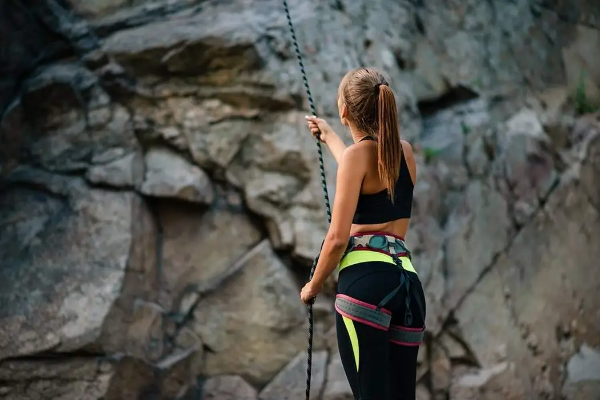Belaying is a crucial aspect of rock climbing. It is the process of securing a climber to prevent falls. The person who controls the rope and ensures the climber’s safety is called the belayer. This role is essential for the safety and success of climbing.
The Role of the Belayer
The belayer manages the rope and supports the climber. They use a belay device to control the rope’s tension. This helps to catch the climber if they fall and allows for smooth movement up and down the climbing route.
Types of Belay Devices
There are different types of belay devices, each with its unique features:
- Tube-style belay devices: These are simple and versatile.
- Auto-locking belay devices: These provide added security by automatically locking the rope.
- Assisted braking devices: These help to reduce the effort needed by the belayer.
Setting Up for Belaying
Proper setup is vital for effective belaying. Here are the steps involved:
- Check the harness: Ensure both the climber and belayer are wearing harnesses correctly.
- Thread the rope: Pass the rope through the belay device as per the manufacturer’s instructions.
- Attach to the harness: Use a locking carabiner to connect the belay device to the belayer’s harness.
Belaying Techniques
Belaying requires specific techniques to ensure safety:
- Taking in slack: The belayer must pull in the rope as the climber ascends to minimize the distance of a potential fall.
- Lowering the climber: When the climb is complete, the belayer gently releases the rope to lower the climber back to the ground.
Communication Between Climber and Belayer
Effective communication is critical. Climbers and belayers use specific commands to ensure understanding. Common commands include:
- “On belay?” The climber asks if the belayer is ready.
- “Belay on.” The belayer confirms they are ready.
- “Climbing.” The climber indicates they are starting.
- “Climb on.” The belayer confirms they are ready for the climber to start.
Safety Checks
Before climbing, both the climber and belayer perform safety checks:
- Harness check: Ensure harnesses are properly worn and secured.
- Rope check: Confirm the rope is correctly threaded and attached.
- Belay device check: Verify the belay device is set up correctly.
- Communication check: Go through the climbing commands to ensure understanding.
Advanced Belaying Techniques
For more experienced climbers and belayers, advanced techniques can be employed:
- Lead belaying: This involves belaying a climber who is placing protection as they ascend.
- Multi-pitch belaying: Used in climbs that require multiple stages, or pitches, where the belayer and climber alternate roles.
- Dynamic belaying: This technique involves giving a little slack to the rope during a fall to reduce the impact force on the climber and gear.
Common Belaying Mistakes
Even experienced belayers can make mistakes. Some common errors include:
- Not paying attention: The belayer must always stay focused on the climber.
- Improper use of the belay device: Incorrect threading or handling of the device can lead to accidents.
- Poor communication: Misunderstandings can result in dangerous situations.
The Importance of Practice
Belaying is a skill that improves with practice. Regular training and climbing help belayers become more proficient. This includes practicing with different belay devices and in various climbing scenarios.
See Also: What Is Xc Skiing
Conclusion
Belaying is a fundamental aspect of rock climbing. It ensures the climber’s safety and supports their ascent. Proper technique, effective communication, and regular practice are key to successful belaying.
FAQ: What is belaying?
Q: Why is belaying important?
A: Belaying is essential for the safety of the climber and the belayer. It allows the climber to move freely while still being secure, and it ensures that the belayer can catch them quickly and safely if they fall.
Q: How does belaying work?
A: Belaying involves connecting the climber to an anchor point on the rock using a rope system. The rope is then threaded through a belay device that acts as a braking mechanism in case of a fall. The belayer controls the rope tension by holding onto the free end of the rope.
Q: What equipment is needed for belaying?
A: To belay, you will need a rope, an anchor point (such as a bolt or natural feature), and a belay device. You may also need other equipment such as carabiners, quickdraws, and a harness.
Q: How do I learn to belay?
A: To learn how to belay, it is recommended that you take a rock climbing course or hire a certified instructor. They will teach you the proper techniques for belaying and ensure that you have the necessary skills and knowledge to belay safely.
Q: Is belaying difficult to learn?
A: Belaying can be challenging to learn, especially for beginners. However, with practice and guidance from a qualified instructor, most people can learn how to belay effectively.
Q: What are some common mistakes when belaying?
A: Some common mistakes when belaying include not paying attention to the climber, not communicating effectively, and not managing the rope properly. It is important to stay focused and alert while belaying to ensure the safety of both the climber and the belayer.
Q: Can anyone belay?
A: While anyone can learn to belay, it is important to have proper training and experience before attempting to belay someone else. Belaying requires knowledge of techniques, equipment, and safety protocols to ensure the well-being of all parties involved.

